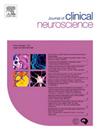Minimally invasive surgery for non-traumatic spontaneous intracerebral Hemorrhage: A network Meta-Analysis of multiple treatment modalities
IF 1.9
4区 医学
Q3 CLINICAL NEUROLOGY
引用次数: 0
Abstract
Introduction
Spontaneous Supratentorial Intracerebral Hemorrhage (SICH) is a severe condition with high mortality and morbidity, annually affecting around 2 million people globally. Current treatment guidelines emphasize medical management however, Minimally Invasive Surgery (MIS), including stereotactic and endoscopic approaches, has shown promise in improving outcomes. This network meta-analysis aims to compare the efficacy and safety of MIS with conventional craniotomy, burrhole catheter insertion, and medical treatment for the management of SICH.
Methods
Following PRISMA guidelines, a comprehensive literature search across three databases to identify relevant studies. Data extracted included demographics, treatment outcomes, and adverse effects, while the quality of studies was assessed using the NHLBI tool. A network meta-analysis was performed using RStudio to compare the effectiveness of MIS approaches with other treatment modalities.
Results
MIS for SICH was more effective than conservative medical management in reducing mortality (OR: 1.991; 95% CI, 1.364–2.907) but did not show a mortality benefit compared to conventional surgery, external ventricular drainage (EVD), or burr hole procedures. MIS had similar hematoma evacuation rates to conventional surgery and burr hole drainage but required significantly less operating time (SMD: 3.837; 95% CI, 2.851–4.823) and reduced ICU stay (SMD: 4.436; 95% CI, 2.386–6.486). Conventional surgery had higher risks of blood loss, seizures, GI bleed/ulceration, and pneumonia/RTI, while MIS showed a safer profile regarding these complications. There was no significant difference in rebleeding (OR: 1.492; 95% CI, 0.632–3.522) or reoperation rates (OR: 0.494; 95% CI, 0.120–2.039) between MIS, conventional surgery, and conservative treatment.
Conclusion
MIS significantly reduces mortality compared to conservative treatment while offering similar outcomes to other surgeries. MIS also has advantages like shorter operating times, reduced ICU stays, and fewer complications, making it a promising alternative for managing SICH.
微创手术治疗非创伤性自发性脑出血:多种治疗方式的网络Meta分析
本文章由计算机程序翻译,如有差异,请以英文原文为准。
求助全文
约1分钟内获得全文
求助全文
来源期刊

Journal of Clinical Neuroscience
医学-临床神经学
CiteScore
4.50
自引率
0.00%
发文量
402
审稿时长
40 days
期刊介绍:
This International journal, Journal of Clinical Neuroscience, publishes articles on clinical neurosurgery and neurology and the related neurosciences such as neuro-pathology, neuro-radiology, neuro-ophthalmology and neuro-physiology.
The journal has a broad International perspective, and emphasises the advances occurring in Asia, the Pacific Rim region, Europe and North America. The Journal acts as a focus for publication of major clinical and laboratory research, as well as publishing solicited manuscripts on specific subjects from experts, case reports and other information of interest to clinicians working in the clinical neurosciences.
 求助内容:
求助内容: 应助结果提醒方式:
应助结果提醒方式:


